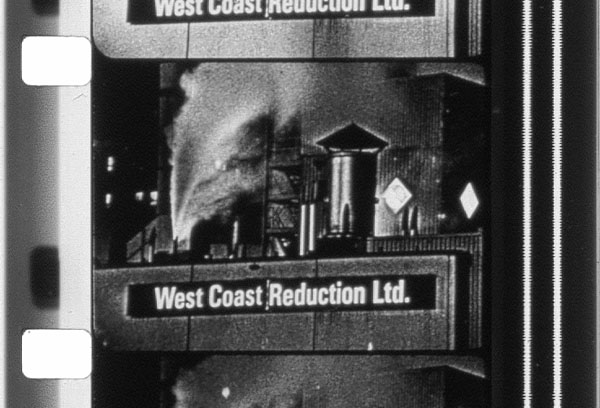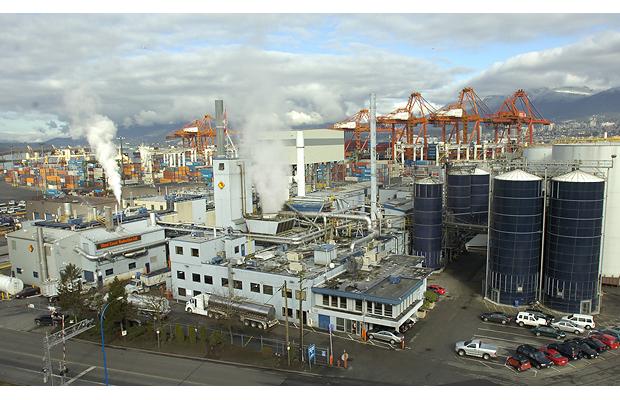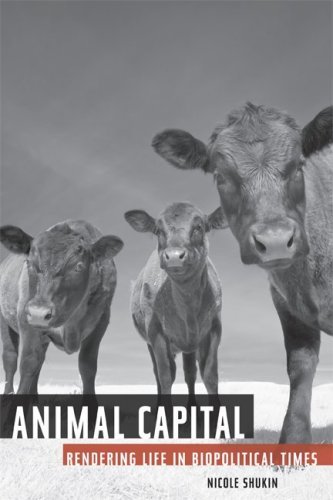As the weather warms I’m reminded of one of the defining olfactory features of parts of summertime Vancouver. My first whiff of it was after moving into an apartment in Hastings-Sunrise, on a new bus route. It was July, in the thick of a stretch of unusually hot summer weather that descended on Vancouver like a heavy thermal blanket. The first couple rank bus rides I assumed garbage had been left out, eaten by a raccoon, and then rejected onto the pavement half-digested to rot in the sun. Visually, my new bus route showcased some of Vancouver’s busiest industrial zones, strung along the Burrard inlet, but around Commercial Drive and Powell Street bus riders’ faces disappeared behind sleeves, or in t-shirts. The smell was unbearable.
Google knew what it was: boiled animal by-products.
I had moved in 100 meters from one of North America’s largest animal rendering facilities. Across Canada, renderers recycle approximately two hundred and fifty thousand tonnes of animal by-products each year. Each week, West Coast Reduction renders more than 10,000 tonnes of beef, pork, poultry and fish by-products, the volume of which is enough to fill 1,000 trucks each week. Their protein meals are shipped worldwide. Fats and oils produced at West Coast Reduction’s other plants arrive via insulated rail tankers at its bulk storage terminal in Vancouver, where they are pumped through underground lines to designated storage tanks before loading and shipping. West Coast Reduction also operates a commercial tank farm with a storage capacity of over 83,000 metric tonnes.
I don’t know what a protein meal is but it sure sounds delicious.
 On the very bus rides through air laden with rogue particles of boiled animal remains, I was reading a book called Animal Capital, in which Nicole Shukin mobilises the double-entendre of ‘rendering’: to copy, mimic, or create a representation; and to boil down animal remains. She finds that rendering’s two meanings are an apt lens through which to approach historical and contemporary complicity between what she calls “the arts” and “industry”, the literal and the figurative, meaning and matter, culture and economy, and discourses and technology, in the realm of animal capital. The economic and the symbolic capital of animals, she writes, can no longer be approached as distinct. Even more critically, the material violence of rendering – both meme and matter – is born most heavily by animal lives.
On the very bus rides through air laden with rogue particles of boiled animal remains, I was reading a book called Animal Capital, in which Nicole Shukin mobilises the double-entendre of ‘rendering’: to copy, mimic, or create a representation; and to boil down animal remains. She finds that rendering’s two meanings are an apt lens through which to approach historical and contemporary complicity between what she calls “the arts” and “industry”, the literal and the figurative, meaning and matter, culture and economy, and discourses and technology, in the realm of animal capital. The economic and the symbolic capital of animals, she writes, can no longer be approached as distinct. Even more critically, the material violence of rendering – both meme and matter – is born most heavily by animal lives.
I stayed a year in the apartment. When the wind was just right, the warm, rendered air would waft in through the patio doors and open windows and fill the apartment with its sweet necro-economic stench. Kick back with a beer, put another protein meal on the stove, and you’ve got yourself a pretty nice little Friday evening.


